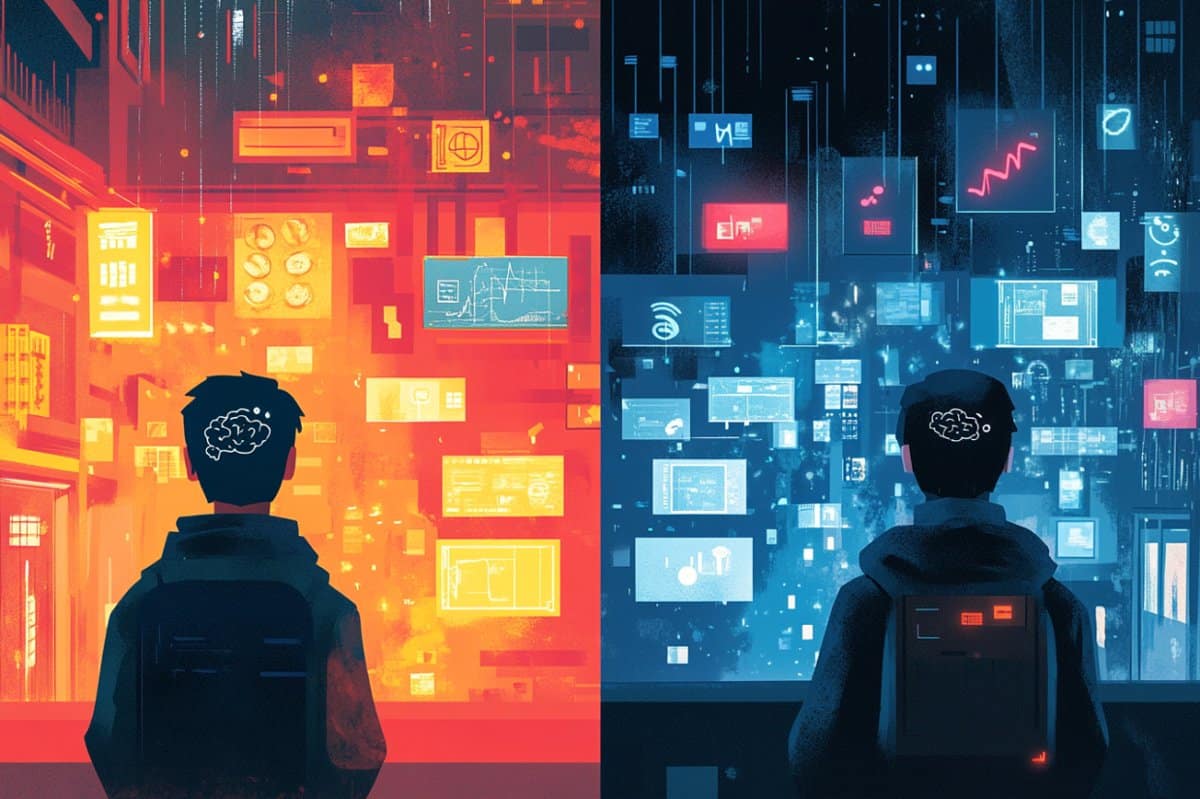Summary: Our brains can adapt to filter out repeated distractions, according to a new EEG study. Participants learned to ignore frequent visual distractions, such as a red shape in the same location, while searching for a target.
Over time, brain activity showed reduced visual processing for these learned distractions — and even for targets that appeared in the same spot. This suggests early visual perception can be shaped by experience, enhancing focus in familiar environments.
Key Facts:
- Neural Adaptation: Repeated exposure to a distraction in the same location reduces early visual processing of that stimulus.
- Improved Focus: Participants were better at locating targets when distractions appeared in familiar locations.
- Wider Implications: Findings may inform the design of user interfaces and traffic systems to support visual efficiency.
Source: University of Leipzig
The human brain can learn through experience to filter out disturbing and distracting stimuli – such as a glaring roadside billboard or a flashing banner on the internet.
Scientists at Leipzig University and Vrije Universiteit Amsterdam have used electroencephalography (EEG) to show that early visual processing in humans changes with repeated exposure.

Their joint study has just been published in The Journal of Neuroscience.
Distractions are often easier to ignore after we have encountered them multiple times. This learned suppression is an important component of the human visual system, which is otherwise strongly influenced by voluntary attention control.
In a series of EEG experiments involving 24 female and male participants, the researchers investigated how learning influences attention to prominent distracting stimuli when these distractions frequently occur in specific locations.
“We found consistent evidence that learning alters the early responses of the visual system to these stimuli,” says Dr Norman Forschack from the Wilhelm Wundt Institute of Psychology at Leipzig University, one of the study’s authors.
In the experiments, participants were asked to locate a specific target object – for example, a green circle among green diamonds.
As part of the task, a distracting stimulus – such as a red diamond – was frequently placed in the same position. Analysis of brain activity revealed that, over time, the brain began to suppress that position within the very first moments of visual processing.
Participants also performed significantly better in locating the target object when the distracting stimulus appeared in the learned position, compared to when it appeared elsewhere.
“These findings show that our brain doesn’t just react automatically to striking stimuli, but can also learn through experience to filter out distractions efficiently,” explains Forschack.
“Interestingly, we also observed reduced visual processing for target stimuli when they appeared in the position where the distractor had been frequently shown,” he adds.
It remains unclear how this habitual attenuation of visual processing works in everyday life – for example, for commuters who repeatedly travel the same routes. According to the researchers, consistent design of roads and traffic environments could be beneficial for road safety.
Dock Duncan of Vrije Universiteit Amsterdam, the study’s lead author, concludes: “It is clear that people automatically recognise familiar user interfaces or textbook chapter layouts and find these useful, and that this effect is already reflected in basic visual processing.”
About this visual neuroscience research news
Author: Carsten Heckmann
Source: University of Leipzig
Contact: Carsten Heckmann – University of Leipzig
Image: The image is credited to Neuroscience News
Original Research: Closed access.
“Learning modulates early encephalographic responses to distracting stimuli: a combined SSVEP and ERP study” by Norman Forschack et al. Journal of Neuroscience
Abstract
Learning modulates early encephalographic responses to distracting stimuli: a combined SSVEP and ERP study
Through experience, humans can learn to suppress locations that frequently contain distracting stimuli. However, the neural mechanism underlying learned suppression remains largely unknown.
In this study, we combined steady-state visually evoked potentials (SSVEPs) with event-related potentials (ERPs) to investigate the mechanism behind statistically learned spatial suppression.
Twenty-four male and female human participants performed a version of the additional singleton search task in which one location contained a distractor stimulus frequently. The search stimuli constantly flickered on-and-off the screen, resulting in steady state entrainment.
Prior to search onset, no differences in the SSVEP response were found, though a post-hoc analysis did reveal proactive alpha lateralization. Following search onset, clear evoked differences in both the SSVEP and ERP signals emerged at the suppressed location relative to all other locations.
Crucially, the early timing of these evoked modulations suggests that learned distractor suppression occurs at the initial stages of visual processing.






